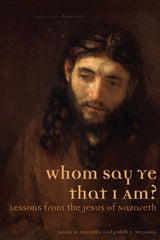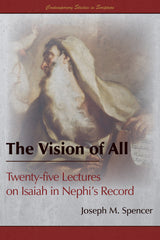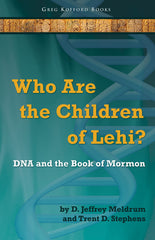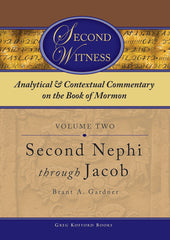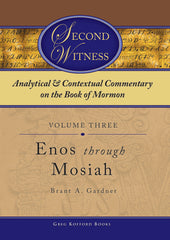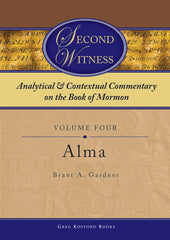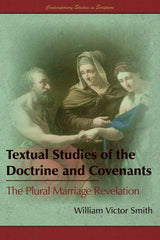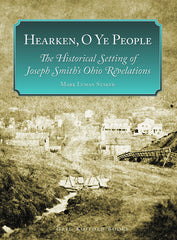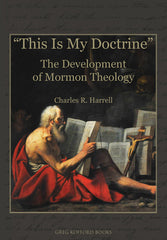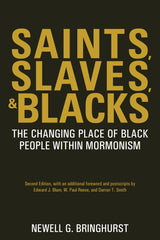News
Spring Flash Sale: Up to 88% off Select Ebooks March 24 2020
Stay at home with a great book and help take the pressure off delivery services by going paperless. From now through Easter, download select ebook titles for 30% to 88% off regular price.
Sale ends Monday, 4/12/2020
****NOTE: Due to an error, the discounts for the Kindle ebooks of Second Witness volumes 5 and 6 were not applied. They should be available at the discounted rate by Sunday*****
Insightful messages on justice, mercy, hope, community, and inspiring outlooks on the future during these difficult times. Discounted right now to just $1.99 (up to 88% off regular retail price).
|
$9.95 |
$16.99 |
$16.99 |
The message of Jesus is one of hope and healing. Spend time contemplating the life and mission of the Savior with thought-provoking and inspiring scholarship. Discounted right now to 50% off regular retail price.
|
$23.99 |
$9.99 |

$22.99 |
The Book of Mormon proclaims another witness of the mission of Jesus Christ. Deepen your knowledge and understanding of this sacred book with studies that explore its text, history, and origins. Discounted right now to 30% off regular retail price.
|
$25.99 |
$17.99 |
$20.99 |
|
$22.99 |
$17.99 |
$27.99 |
|
$27.99 |
$22.99 |
$9.99 |
|
$29.99 |
$29.99 |
$29.99 |
|
$29.99 |
$29.99 |
|
Claudia Bushman — "I, Nephi." January 14 2020
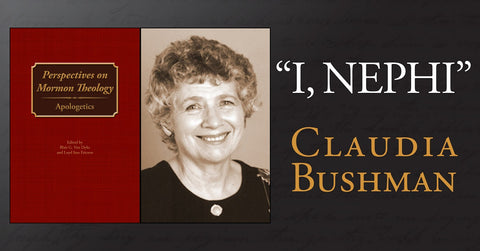
To aid with the Latter-day Saint 2020 Come Follow Me study of the Book of Mormon, we are happy to share Claudia Bushman's insightful essay, "I, Nephi," on the opening chapters of First Nephi from our 2015 Perspectives on Mormon Theology: Scriptural Theology, edited by James E. Faulconer and Joseph M. Spencer.
For additional study aids, see our list of Book of Mormon resources.
Read the essay below or download it here.
Q&A with Don Bradley, author of The Lost 116 Pages: Reconstructing the Book of Mormon's Missing Stories December 09 2019
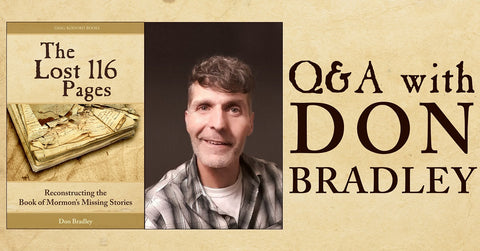
| Download a free sample preview | Order your copy |
For readers less familiar with the "lost 116 pages" can you provide a brief synopsis of what they were and how they became lost?
After Joseph Smith dictated to scribes the first four and half centuries of the Book of Mormon’s chronicle of ancient Jewish settlers in the New World (the Nephites), the manuscript of this account was borrowed by the last of those scribes, Martin Harris. The manuscript later disappeared from Harris’s locked drawer and has been lost to history ever since. The current Book of Mormon text is therefore incomplete, substituting a shorter account for this lengthy missing narrative.
Can you piece together what most likely happened to this lost early manuscript? Does the standard narrative that Lucy Harris likely destroyed them hold up? If not, why and what other possibilities should we consider?
When the manuscript disappeared, Martin Harris initially suspected his wife of the theft. Lucy Harris had been skeptical of her husband’s investment in the book and would have had motive to interfere. Lucy Harris has been regarded as the prime suspect in the theft since the late 1800s, and it has been widely presumed that she burned the manuscript. However, the explanation that Lucy Harris burned the manuscript was first proposed as only a speculative possibility a quarter-century after the fact, but the dramatic image of the disgruntled wife throwing the pages into the flames quickly caught fire and became increasingly popular with time. The further the historical sources get from the actual theft, the more likely they are to tell this story, indicating that it was the story’s sensationalism, rather than its accuracy, that led to its popularity. The first person to have suspected Lucy Harris of the theft, her husband Martin, abandoned this theory when he learned that his estranged but devout Quaker wife had denied on her deathbed knowing what happened to the pages.
The presumption that Lucy Harris stole the pages, acted alone in doing so, and burned them has prevented investigators from looking closely at other suspects, including a number of people who had previously attempted to steal other documents and relics associated with the Book of Mormon. Former treasure digging associates of Joseph Smith had attempted several times to steal the original Book of Mormon—the golden plates. And Martin and Lucy Harris had a son-in-law, a known swindler, who once stole the “Anthon transcript” of characters copied from the plates. Fixating on Lucy Harris as the only possible thief has blinded inquirers to noticing these obvious suspects.
Despite the widespread presumption that Lucy Harris was guilty of taking and burning the manuscript, the manuscript’s ultimate fate is an open question.
You assert that the lost early manuscript might have been longer than 116 pages. Can you provide some reasoning for this? Can you also speculate on how long they may have been?
The number given for the length of the lost manuscript—116 pages—exactly matches the length of the “small plates” text that replaced that manuscript. This coincidence has led several scholars, beginning with Robert F. Smith, to propose that the length of the lost manuscript was actually unknown and the 116 pages figure was just an estimate based on the length of its replacement.
While we can’t know for sure the length of the lost manuscript, unless it turns up, we can do better than just guessing at its actual length, because we have several lines of evidence for this, all of which converge on a probable manuscript size. Joseph Smith reported that Martin scribed on the lost manuscript over a period of 64 days, which, given Joseph’s known translation rate would have produced a manuscript far larger than 116 pages. In line with this, Emer Harris, ancestor to a living Latter-day Saint apostle and brother to Martin Harris, reported at a church conference that Martin had scribed for “near 200 pages” of the manuscript before it was lost. A later interviewer recounted Martin himself reporting a similar scribal output when stating what proportion of the total Book of Mormon text he recorded. Since Martin was not the only scribe to work on the now-lost manuscript but, rather, the fifth such scribe, the manuscript as a whole would have been well in excess of the nearly 200 pages produced by Martin, likely closer to 300 pages. Other lines of evidence within the existing Book of Mormon text point to a similar length for the lost portion.
What sources are used in this book to identify what was in the Book of Mormon's lost 116 pages?
To reconstruct the Book of Mormon’s lost stories this book makes use of both internal sources from within the current Book of Mormon text and external sources beyond that text. Internal sources from the Book of Mormon include, first, accounts from the narrators of the small plates of Nephi, which cover the same time period as the lost portion of Mormon’s abridgment, and, second, narrative callbacks in the surviving remnants of Mormon’s abridgment that refer to the lost stories. External sources used in the reconstruction include statements in the earliest manuscripts of Joseph Smith's revelations describing and echoing the lost pages, statements by Joseph Smith reported by apostles Franklin D. Richards and Erastus Snow, an 1830 interview granted by Joseph Smith, Sr., a conference sermon by Martin Harris’s brother Emer Harris, and reports by several other early Latter-day Saints and friends of Martin Harris.
Can you provide a few examples of how your research into the lost early manuscript has increased your awareness of a Jewish core in the Book of Mormon text?
The research that went into this book has disclosed to me a Jewishness to the Book of Mormon that I could never have imagined. Through the lens of the sources on the lost manuscript, we can see the Jewishness in the Book of Mormon from the very start: according to Joseph Smith, Sr., the lost pages identified the Book of Mormon as beginning with a Jewish festival, namely, Passover. This Jewishness is particularly striking in the sources on the lost manuscript’s narrative of the book’s founding prophets Lehi and Nephi. Their narrative begins in that of the Hebrew Bible, at the start of the Jewish Exile. The recoverable lost-manuscript narratives of Lehi and Nephi show them seeking to build a new Jewish kingdom in the New World systematically parallel to the pre-Exile Jewish kingdom in the Old World. Having lost the biblical Promised Land, sacred city, dynasty, temple, and Ark of the Covenant, they set about re-creating these by proxy.
This Jewishness in the Book of Mormon is paralleled by a distinct Jewishness of the Book of Mormon’s coming forth. Reconstructing a chronology of the several earliest events in the Book of Mormon’s emergence shows every one of these events to have been keyed to the dates of Jewish festivals. In ways not previously appreciated, the Book of Mormon is a richly and profoundly Judaic book.
In your book, you discuss temple worship among the Nephites. Can you summarize some of your findings?
Temple worship stands at the center of Nephite life and of the Book of Mormon’s narrative. The early events of Nephite history, as chronicled in the present Book of Mormon text and fleshed out further in the sources on the book’s lost manuscript, all build toward the ultimate goal of re-establishing Jewish temple worship in a new promised land. Re-establishing such worship required constructing a system closely parallel to that of Solomon’s temple. To meet the requirements of the Mosaic Law, the Nephites would have needed substitutes for the biblical high priest and Ark of the Covenant, with their associated sacred relics. Accordingly, the Nephite sacred relics—the plates, interpreters, breastplate, sword of Laban, and Liahona—systematically parallel the relics of the biblical Ark and high priest, showing how closely temple worship in the Book of Mormon was modeled on temple worship in the Bible.
In what ways are the doctrines in the early lost Book of Mormon manuscript reflected in the doctrines of early Mormonism?
Earliest Mormonism has sometimes been understood as primarily a form of Christian primitivism, the New Testament-focused nineteenth-century movement to restore original Christianity. Yet already when we explore the earliest Mormon text, the lost portion of the Book of Mormon, we find a whole-Bible religion, one weaving Christian primitivist, Judaic, and esoteric strands into a distinctively Mormon restorationist tapestry of faith.
The Book of Mormon’s focus on the temple is also very Mormon. Temple worship among the Nephites not only echoes ancient Jewish temple worship, but it also anticipates temple worship among the Latter-day Saints. The recoverable narratives of the Book of Mormon’s lost pages portray the Nephite temple as not only a place in which sacrifices are performed but also one in which higher truths are taught in symbolic form, human beings learn to speak with the Lord through the veil, and people can begin to take on divine attributes.
What are you hoping readers will gain from your book?
This book’s earliest seed was my childhood curiosity about the Book of Mormon’s lost pages. That seed grew in adulthood when I realized how knowing more about the Book of Mormon’s lost pages could illuminate its present pages. On one level, this new book is a book about the Book of Mormon’s lost text, pursuing the mystery of what was in the lost first half of Mormon’s abridgment. On another level, this is a book about understanding more deeply the Book of Mormon text we do have, since the last half of any narrator’s story is best understood in light of the first half. Researching what can be known about the lost manuscript has helped me to more fully recognize the Book of Mormon’s richness, understand its messages and meanings, and grasp its power as a sacred text. My hope is that recapturing some of the long-missing contexts behind our Book of Mormon will also expand others’ understanding of and appreciation for this remarkable foundational scripture of Latter-day Saint faith and inspire readers to delve deeper into the Book of Mormon.
Don Bradley
December 2019
Christmas Gift Sale: 30% off select titles! November 29 2019

Christmas Gift Sale: 30% off select titles*
Looking for the perfect gifts for the book lover in your life? Get 30% off select titles now through Dec 18.
**Free pickup is available for local customers. See below for details.**
Sale ends Wednesday, 12/18/2019
|
$20.95 |
$21.95 |
$27.95 |
|
|
$26.95 |
$21.95 |
$19.95 |
|
|
$20.95 |
$27.95 |
$25.95 |
|
|
$26.95 |
$34.95 |
$34.95 |
|
|
$20.95 |
$19.95 |
||
|
$34.95 |
$36.95 |
$29.95 |
|
|
$34.95 |
$15.95 |
||
|
$39.95 |
$39.95 |
$39.95 |
|
|
$49.95 |
$39.95 |
$39.95 |
|
|
|
COMPLETE SET $249.70 |
FREE PICKUP FOR LOCAL CUSTOMERS
Enter PICKUP into the discount code box at checkout to avoid shipping and pick up the order from our office in Sandy, Utah.
Pickup times available by appointment only. Email order@koffordbooks.com to schedule your pickup time.
*Offers valid for U.S. domestic customers only. Limited to available supply.
Free ebook offer: Who Are the Children of Lehi? DNA and the Book of Mormon November 20 2019

FREE EBOOK FOR NEWSLETTER SUBSCRIBERS
Book description:
How does the Book of Mormon, keystone of the LDS faith, stand up to data about DNA sequencing that puts the ancestors of modern Native Americans in northeast Asia instead of Palestine?
In Who Are the Children of Lehi? D. Jeffrey Meldrum and Trent D. Stephens examine the merits and the fallacies of DNA-based interpretations that challenge the Book of Mormon’s historicity. They provide clear guides to the science, summarize the studies, illuminate technical points with easy-to-grasp examples, and spell out the data’s implications.
STEPS TO DOWNLOAD
**Ebook file must be downloaded onto a laptop or desktop computer. After downloading, you can transfer the file to a tablet or app.**
1. Enter your email address in the form below to sign up for our newsletter and receive a welcome email with instructions (check your junk mail if you do not see it). If you are already a newsletter subscriber, you should have received an email with this free ebook offer and instructions to download.
2. Click here to open the ebook page on our website. Select which ebook format you wish to download (Kindle, Apple, Nook, or Kobo). The price will show as $19.95 but will change to $0.00 as you complete these steps.
3. Click Add to Cart.
4. Click Checkout.
5. On the Customer Information page, fill out your name and address information. Enter the discount code that you received in the welcome email. The discount code will reduce the price of the book to $0.00.
6. Click Continue to Payment Method. You will not be required to enter payment info. DO NOT ENTER ANY CREDIT CARD INFORMATION.
7. Click Complete Order. You will be emailed a link to download the ebook file along with instructions for transferring the file to an e-reader device or app (check your junk mail if you do not see it).
Note: Once you have downloaded your ebook, it will be on your computer's hard drive, most likely in the "Downloads" folder. Kindle format will end with ".mobi." All other formats will end with ".epub."
Preview The Lost 116 Pages: Reconstructing the Book of Mormon's Missing Stories November 20 2019
The Lost 116 Pages:
Reconstructing the Book of Mormon's Missing Stories
By Don Bradley
Download a preview here or view below.
On a summer day in 1828, Book of Mormon scribe and witness Martin Harris was emptying drawers, upending furniture, and ripping apart mattresses as he desperately looked for a stack of papers he had sworn to God to protect. Those pages containing the only copy of the first three months of the Joseph Smith’s translation of the golden plates were forever lost, and the detailed stories they held forgotten over the ensuing years—until now.
In this highly anticipated work, author Don Bradley presents over a decade of historical and scriptural research to not only tell the story of the lost pages but to reconstruct many of the detailed stories written on them. Questions explored and answered include:
- Was the lost manuscript actually 116 pages?
- How did Mormon’s abridgment of this period differ from the accounts in Nephi’s small plates?
- Where did the brass plates and Laban’s sword come from?
- How did Lehi’s family and their descendants live the Law of Moses without the temple and Aaronic priesthood?
- How did the Liahona operate?
- Why is Joseph of Egypt emphasized so much in the Book of Mormon?
- How were the first Nephites similar to the very last?
- What message did God write on the temple wall for Aminadi to translate?
- How did the Jaredite interpreters come into the hands of the Nephite kings?
- Why was King Benjamin so beloved by his people?
Black Friday 2019 Sales: 40% - 60% off Select Book of Mormon Titles! November 19 2019

6 AM on Thanksgiving Day through Monday 12/2*
(Free pickup available for local customers. See below for details.)
|
$39.95 |
$39.95 |
$39.95 |
|
$49.95 |
$39.95 |
$39.95 |
|
|
COMPLETE SET 60% OFF $249.70 |
|
|
$34.95 |
$34.95 |
$25.95 |
|
$15.95 |
$21.95 |
$19.95 |
FREE PICKUP FOR LOCAL CUSTOMERS
Enter BOMPICKUP into discount code box at checkout to avoid shipping and pick up the order from our office in Sandy, Utah.
Available pick-up times:
Fri 11/29 from 10 AM to 2 PM
Sat 11/30 from 10 AM to 2 PM
Mon 12/2 from 10 AM to 4 PM
11075 S State Street
Building 4
Sandy, UT 84070
Other pickup times available upon request. Please contact us at order@koffordbooks.com to make arrangements.
*Offers valid for U.S. domestic customers only. Limited to available supply.
Q&A with Bradley Kramer, author of Gathered in One: How the Book of Mormon Counters Anti-Semitism in the New Testament September 16 2019

| Download a free sample preview | Order your copy |
Q: For some, hearing that the New Testament contains anti-Semitic language can be challenging. Can you provide a few examples of anti-Semitic rhetoric in the New Testament?
A: Yes. However, first I would like to clarify that I do not think that the New Testament as a whole is anti-Semitic. I do think that the New Testament contains many anti-Semitic statements, anti-Semitic portrayals, anti-Semitic settings, and anti-Semitic structuring elements that together form a kind of literary tide that pulls its readers towards an anti-Semitic point of view, but that is not the same as saying the entire New Testament is anti-Semitic or that anti-Semitism is its major theme.
The Gospel of John, for instance, not only contains a statement where “the Jews” are told that their father is the devil (John 8:44), but they are portrayed explicitly as questioning Jesus (2:18), as accusing him of being in league with the devil (8:48), and as instilling fear in his followers (7:13; 19:38; 20:19). In this Gospel, “the Jews” function as a foil to everything Jesus stands for and teaches. They are from beneath while Jesus is from above; they are of this world while Jesus is not (8:22-23), and they, unlike the enlightened Jesus, love “darkness rather than light, because their deeds are evil” (3:19).
The Gospel of Matthew reinforces this view of Jews through its portrayal of Pharisees. In this Gospel, Pharisees are hypocritical (Matt. 16:3), judgmental (9:11), rule-bound (12:2), scheming (v.14), stupid (v. 24), sign-seeking (v. 38), superficial (15:1), easily offended (v.12), spiritually blind (v. 14), corrupt (12:33), petty (23:23), tricky (22:15), prideful (16:6), and murderous (12:14). True, the Pharisees are only a subgroup of Jews, but without many examples of other subgroups acting differently, they seem to represent Jews as a totality.
In addition, the Gospel of Matthew uses settings to undermine the viability and validity of Jewish practices. The Last Supper, for instance, is set as a Passover Seder and shows Jesus commenting on two of its most important elements: the bread and the wine. However, in this Gospel, the Mosaic meanings of these elements are not mentioned or discussed as stipulated by the Law of Moses (Ex. 12:25–27). Instead, they are presented simply as food items that have lost their Mosaic meaning and can, therefore, be easily repurposed as memorials of Jesus’s soon to-be-dead body and spilt blood. In this way, the Gospel of Matthew presents Passover, much like the Jews themselves, as something devoid of true spirituality and in need of replacement.
Q: Is there scholarly consensus regarding anti-Semitism in the New Testament? Can you provide examples of scholarly debate on the topic?
A:I think so, yes. Many scholars, however, prefer to use the term “anti-Judaic,” feeling that the New Testament attacks Jews more as members of a certain faith, which can change, than as members of an ethnic or genetic group, which cannot. I have elected to use “anti-Semitic” in my book because 1) most of my sources use that term, 2) “anti-Semitic” is the more common, inclusive term, and 3) in practice the distinction between these two approaches is not always clear—even in the New Testament. Jesus in the Gospel of John, for instance, does not tell “the Jews” that the devil is their spiritual leader; he says that the devil is their “father” (John 8: 44). Similarly, in Matthew the Jewish multitude cries out for his blood to be upon their “children, not upon their religious descendants (Matt. 27:25).
Scholars, as well as many devoted Christian ministers, are disturbed by this scene in the Gospel of Matthew. It seems to brand all Jews throughout time as “Christkillers” and has been used to justify numerous anti-Jewish atrocities. As a result, many of these scholars, ministers, and laypeople deny that it ever happened. They point out that there is no record of any Roman governor ever releasing prisoners on Passover and question the logic of such a custom. After all, why would a Roman official charged with keeping the peace run the risk of releasing his most dangerous enemies back into society? It makes no sense.
These scholars and ministers similarly dispute the Gospels’ portrayal of Pilate as a spiritually ambivalent government official who could be swayed by the voice of a Jewish multitude. According to Roman records, not only did Pilate place Roman images inside the Temple precincts in direct opposition of the will of his subjects, but he also confiscated Temple funds when they refused to pay their taxes. Furthermore, when people gathered before him to protest, he had his soldiers disguise themselves, infiltrate the crowd, and slaughter them all.
The majority of scholars and ministers see Pilate as a merciless ruler who would have had no qualms whatsoever about crucifying Jesus. However, by doing so, Pilate presented early Christians with a problem. After all, they had to live and work and worship within the Roman Empire. It would not be wise to paint a Roman official as a murderer, particularly as the murderer of the Son of God. Many scholars and ministers, therefore, see this scene as a fictional embellishment designed to shift the blame for Jesus’s death from the Romans to the already despised Jews.
Q: Can you provide an example or two of how the Book of Mormon counters anti-Semitism in the New Testament?
A: I can think of no more powerful condemnations of anti-Semitic behavior than these:
O ye Gentiles, have ye remembered the Jews, mine ancient covenant people? Nay; but ye have cursed them, and have hated them, and have not sought to recover them. But behold, I will return all these things upon your own heads; for I the Lord have not forgotten my people. (1 Ne. 29:5)
Yea, and ye need not any longer hiss, nor spurn, nor make game of the Jews, nor any of the remnant of the house of Israel; for behold, the Lord remembereth his covenant unto them, and he will do unto them according to that which he hath sworn. (3 Ne. 29:8)
Furthermore, these are not simply official declarations issued by a church or statements from an ecclesiastical leader. In the former, it is God who chastises non-Jews (probably Christians) for persecuting Jews; and in the latter, it is Mormon, a prophet of God, who commands these same Christians to cease oppressing the Jews.
Also, notice that these condemnations do not comment upon any particular passage in the New Testament, nor do they challenge the veracity of any specific New Testament event. However, given their clarity of expression, they make it very difficult for Christians to interpret the New Testament anti-Semitically.
In this way, the Book of Mormon does not change the New Testament’s words or call into question their ability to convey divine messages to their readers directly. However, for believers, it alters how the New Testament’s words are understood. When joined with the New Testament in the Christian canon, the Book of Mormon overwhelms the anti-Semitic statements, portrayals, settings, and structural elements with more numerous and more sweeping pro-Jewish statements, portrayals, settings, and structural elements of its own. In this way, the Book of Mormon turns the literary tide in the New Testament and causes it to flow in the opposite direction.
Q: How does the Book of Mormon limit Jewish involvement in Jesus’ death?
A: For the most part, the prophets in the Book of Mormon seems more interested in what Jesus’s death accomplished than in who killed him. Nephi, for instance, recounts his vision of Jesus’s death saying only that Jesus “was lifted up upon the cross and slain for the sins of the world” without specifying who did the lifting (1 Ne. 11:33), and Abinadi similarly prophecies that Jesus will be “led, crucified, and slain” again without mentioning who will do the leading, crucifying, and slaying (Mosiah 15:7). The same is true for Samuel the Lamanite (Hel. 13:6) and even Jesus (3 Ne. 11:14).
Furthermore, when these prophets do attempt to identify Jesus’s killers, they use vague terms such as “the world” or “wicked men” (1 Ne. 19:7–10), or they employ phrases that, while they may appear at first to indict all Jews everywhere, actually absolve the majority of Jews of any involvement whatsoever in Jesus’s death. Jacob’s “they at Jerusalem” (2 Ne. 10:5), for example, may seem to some readers to indicate that all Jews participate somehow in Jesus’s crucifixion. These readers link this phrase with “the Jews” in verse 3 and see it as affirming universal Jewish culpability regarding Jesus’s death. However, during Jesus’s lifetime, only a small percentage of the world’s Jews lived in Jerusalem. During that time, most Jews were still residing in Babylon or were scattered throughout the eastern Mediterranean and beyond—as Jacob, who as one of the most far-flung of these Jews, knew very well.
In other words, instead of serving as a synonym of “the Jews,” “they at Jerusalem” functions as the last element in a grammatical sequence that shrinks the number of Jews connected to Jesus’s death from all Jews everywhere to “those who are the more wicked part of the world” to just those Jews living in Jerusalem during the early first century. In a similar way, 2 Nephi 10 also softens “they shall crucify him” of verse 3 to “they . . . will stiffen their necks against him, that he be crucified” and complicates their complicity by stating in verse 5 that they do so not because of some deep-seated personal conviction but “because of priestcrafts and iniquities.”
Q: What is supersessionism and how does the Book of Mormon refute it?
A: Supersessionism is the traditional Christian doctrine that the Jews have been disobedient for so long, failing to follow their own law as well as murdering its originator (Jesus), that their covenantal connection to God has been revoked and they have been replaced by Christian Gentiles. Statements in the Book of Mormon clearly refute this notion by confirming that the Jews remain God’s “covenant people” (2 Ne. 29:4–5) even after Jesus’s death (Morm. 3:21), and by affirming that despite being scattered “upon all the face of the earth,” the Jews will one day be “armed with righteousness and with the power of God in great glory” (1 Ne. 14:14), that they will be delivered from their enemies (2 Ne. 6:17), and that pure people everywhere will seek “the welfare of the ancient and long dispersed covenant people of the Lord” (Morm. 8:15).
In addition to these statements, the portrayal of the Nephites and Lamanites further reinforces the Jews’ ongoing covenantal connection to God. In the Synoptic Gospels, Jews, as Pharisees, are portrayed as so hypocritical and murderous (at least towards Jesus) that it is hard to see them as continuing in God’s covenant. In the Book of Mormon, Nephites also struggle with hypocrisy as do the Lamanites with murder, and yet never are these New World Jews removed from God’s covenant or detached from God’s care. Missionaries go to them, and often they repent, but even when they do not and their civilization disintegrates into self-destructive chaos, God continues to seek after their descendants and sees them always as heirs to the covenantal promises given to Abraham, Isaac, and Jacob.
Q: How should Latter-day Saints relate to Jews?
A: With charity, just like Nephi (2 Ne. 33:8), and not as potential converts. It is significant that the Book of Mormon never uses the words “convert” or “conversion” in connection with Jews. Instead, it employs “persuade” and “convince,” and presents Jesus as the only person authorized to do this persuading and convincing. As he tells the Nephites:
And then will I gather them in from the four quarters of the earth; and then will I fulfil the covenant which the Father hath made unto all the people of the house of Israel. . . . And then will I remember my covenant which I have made unto my people, O house of Israel, and I will bring my gospel unto them. (3 Ne. 16:5, 11)
This repetition of the pronoun “I” in this passage and in 3 Ne. 21:1 indicates to me that Christians should not press Jews to accept Jesus. They should instead have enough faith in their Master to let him do what he has covenanted to do without any help or interference from them.
Christians should embrace Jews as brothers and sisters in God’s covenant, as true friends with whom they can talk, play, work, worship, hang out, enjoy, and learn from, especially in regards to the Scriptures. As Nephi reminds his readers:
I know that the Jews do understand the things of the prophets, and there is none other people that understand the things which were spoken unto the Jews like unto them, save it be that they are taught after the manner of the things of the Jews. (2 Ne. 25:5)
Q: What are you hoping readers will gain through this book?
A: I hope my readers will see more clearly just how the Book of Mormon can augment and enhance the Bible without undermining its scriptural authority or reliability. I hope they will also feel a closer, more informed, more appreciative connection with Jews. I think many Christians are fairly ignorant about Jews and are somewhat split in their opinion of them. Through movies such as “Schindler’s List,” “Denial,” and “The Pianist,” they may feel sympathetic towards Jews because of persecutions they have suffered and the pains they have endured. However, because of the New Testament, they may also be inclined to see Jews as chronic nitpickers who hypocritically follow superficial religious practices.
With this book, I hope to resolve this difference by showing my readers that there is more to the Jews than is offered in the New Testament, that Mosaic practices remain relevant today, that the Law of Moses has been observed admirably by an admirable people; and that Jews have much to teach Christians religiously, ethically, and scripturally. They certainly have taught me much.
Bradley J. Kramer
September 2019
Preview Gathered in One: How the Book of Mormon Counters Anti-Semitism in the New Testament August 23 2019
Gathered in One:
How the Book of Mormon Counters Anti-Semitism
in the New Testament
Download a preview here or view below.
Since the Holocaust, a growing consensus of biblical scholars have come to recognize the unfair and misleading anti-Semitic rhetoric in the New Testament—language that has arguably contributed to centuries of violence and persecution against the Jewish people.
In Gathered in One, Bradley J. Kramer shows how the Book of Mormon counters anti-Semitism in the New Testament by approaching this most Christian of books on its own turf and on its own terms: literarily, by providing numerous pro-Jewish statements, portrayals, settings, and structuring devices in opposition to similar anti-Semitic elements in the New Testament; and scripturally, by connecting with it as a peer, as a divine document of equal value and authority, which can add these elements to the Christian canon (as the Gospel of John can add elements to the Gospel of Matthew) without undermining its authority or dependability.
In this way, the Book of Mormon effectively “detoxifies” the New Testament of its anti-Semitic poison without weakening its status as scripture and goes far in encouraging Christians to relate to Jews respectfully, not as enemies or opponents, but as allies, people of equal worth, importance, and value before God.
Q&A with David B. Ostler for Bridges: Ministering to Those Who Question July 23 2019

| Download a free sample preview | Order your copy |
Q: Give us a brief background into who you are and why you decided to write this book.
A: I’m a retired father and husband, with six children and five, almost six, grandchildren. My children are wonderful and some no longer believe in basic principles and doctrines of the Church. I’ve been a leader in the Church and with my wife, served two full time and two church service missions. Our last mission was in our stake, working with leaders to better understand why people disaffiliate from the Church.
As we worked with our stake leaders, we research and studied the frequency and causes why people, particularly previously faithful adults, choose to disaffiliate. We found that Church-wide most leaders see disaffiliation as a very important concern in their ward, stake and particularly in their family. We also found that many leaders were not fully aware of the underlying reasons and didn’t feel they fully understood how to help. They probably feel the same in their homes.
So, after completing that calling, I decided that I could take what we learned and create a resource for members to better understand why people leave so that we could find common ground, build understanding and truly minister to those who no longer worship with us. I conducted some original research, interviewed leaders and disaffiliated members, and studied the words of our Church leaders as well as experts in the field. In this research, I learned that the pain of disaffiliation isn’t just felt by that person’s family or leaders, but also by the disaffiliating member. They often feel isolation, fear, anger and other hurtful emotions; often unintentionally caused by their family, friends, and leaders.
I hope this book can bridge that misunderstanding and give us a better understanding to build trusting and meaningful relationships with those who no longer believe as we do.
Q: Who is your intended audience for the book and how do you hope it will be used?
A: I think there will be two readers for the book. I wrote the book for fully believing members so that they can better understand their friends, ward member, or family member who no longer believes in the truth claims of the Church of Jesus Christ of Latter-day Saints. I hope it gives each reader understanding on how to build a trusted relationship with that person. With that understanding, I hope that some of the pain, fear, and hurt that is felt on both sides can be turned into love and acceptance. Perhaps in some cases, that understanding will create an opportunity for someone to “come back” or to have someone “stay.” For believing members, I hope that reading this book will help build a bridge with a better understanding as they minister to those who doubt.
I also realize readers will include some who no longer believe. I hope that this book will give them hope that we are trying to be more understanding and that their relationship with their families, friends and Church members can be strong and rich, even with differences in belief.
This isn’t a leadership book. But knowing that each leader is also a member and that we rotate in and out of ward and stake callings, I include some ideas that leaders can use with their callings. The principles are the same and can be applied in families, with friends, as church members, and when we serve in church callings.
Q: We hear numerous reports of religious disaffiliation in our modern age, particularly in Western society. How are these trends reflected in The Church of Jesus Christ of Latter-day Saints?
A: All churches and denominations are experiencing a drop in membership and participation. Younger Americans, particularly Millennials and Gen-Z, see little need to participate in organized religion. In fact, the fastest-growing group of religious identification is “spiritual, but non-religious.” As Latter-day Saints, we are experiencing these same trends. The underlying reasons include society’s broad acceptance of those who are non-religious, people being comfortable going it alone, less trust of institutions in general and of religions specifically, more opportunities to find friends and like-minded people through social media and other settings, and more. The reasons are many.
For the Church in the United States, data from social scientists show that disaffiliation for those born after 1970 is about 39% and, although the sample size is low, that 55% of millennials have disaffiliated. Most of those who disaffiliate remain on the rolls of the Church, but no longer think of themselves of Latter-day Saints. And they disaffiliate younger than previous generations. The average age of millennial disaffiliation is 18.4 years while for boomers it was 23.7 years.
Q: What are a few root causes for religious disaffiliation among Latter-day Saints?
A: Latter-day Saints experience all the same issues as other religions, but there are unique issues which we face. Some leave because they become aware of issues in our history which are controversial or seem inconsistent with our values. They may have concerns about particular Church policies, like our teachings about LGBTQ issues. They may disagree with the way in which women and men serve and experience the Church. Church culture and what they experience in their wards and classes may feel judgmental and perfectionistic. They may be different in some way, like being childless, or being single, experiencing mental illness, being politically liberal. Others just don’t feel the Church addresses the areas which are meaningful to them, including issues of social justice, poverty, racism, sexism or violence.
Q: What are a few typical responses among families and congregations towards those who disaffiliate or become disaffected with the Church’s teachings?
A: As I interviewed members and read their comments and experiences in my surveys, I was frankly surprised by the disconnect between fully believing members and local leaders and those who doubt, question, or have left the Church. Many believing members feel the primary reasons why people leave is because they are offended, have sinned, or are lazy. They sometimes blame the disaffiliating member for having not studied scriptures, prayed, or attended the temple often enough. Those members who are struggling with their faith often have serious doctrinal, historical, or cultural concerns about the Church. When members or local leaders don’t have a true understanding of why these people leave or struggle to stay, their efforts are often ineffective, or worse, hurtful, and push members further away.
Sometimes it is because they don’t understand, but also, it causes fear when a family member learns their child, sibling, or spouse is struggling with belief. It threatens their hope for an eternal family as they worry about their spiritual welfare.
Without thinking about it, we make a snap judgment as to why they have left and assume that it is because they have been offended or because of secret sin. We may be afraid to ask them because we don’t want to offend them. We might keep them at arm’s length and be afraid that they will infect us with doubt. Some disaffiliated members feel that they are labeled as “anti-Mormon” or “apostates” and don’t feel that they are welcome. We may exclude them from our social life because we are uncomfortable with them or with having our children associate with them. Leaders may release them from their callings even though they are willing to serve.
Sometimes in our interactions with disaffiliated members, we seek to testify or explain away their concerns when they just want to keep their close relationship, friendship, or continue to worship even with their doubts.
Q: What are a few ways we can minister to disaffiliated and disaffected members, both individually and as congregations?
First and most important, we need to learn to listen to them individually and collectively. We really don’t know their concerns unless we take the time to listen. Listening is hard—it means that we suspend trying to explain their decision and instead really let them share with us what they are feeling and why. Our minds will naturally try and explain it away and find the fault in their logic or life that lead them to their new beliefs. As they are talking, our minds might be filled with how we can counter their concerns. We might be tempted to encourage them to read more scripture, pray harder, or go to the temple. But first, we need to just listen to understand their concern and why it is important to them. Giving unsolicited advice rarely works.
While listening, we need to take their concerns seriously. These issues are very real to them and we should never try and minimize their concerns. We need to validate, even if we disagree. Later, after they know that we really care about their concerns and how it impacts them, perhaps we can discuss ways to think about the issue or even more forward without a clear resolution.
Q: What brief message can you offer to family members or friends of individuals who have become disaffected with the Church’s teachings or who have chosen to disaffiliate?
A: As we listen and validate, we can answer some questions; and when we can’t, we can mourn and comfort our family or friend who has become disaffected. We can find common ground, even if we aren’t 100% united in the values we live and in our spiritual beliefs. Our relationships can be meaningful, close, and full of love, even with these differences.
If they come back, that’s wonderful. If they don’t, we can trust the Lord and enjoy every moment, even within our differences. I take great comfort from Elder Orson F. Whitney, who said, “Our Heavenly Father is far more merciful, infinitely more charitable than even the best of his servants, and the everlasting gospel is mightier in power to save than our narrow finite minds can comprehend.” Our Heavenly Parents love our family member or friend far more than we can comprehend. They want their happiness too, today and forever.
David B. Ostler
July 2019
PIONEER DAY FLASH SALE: Up to 70% off Select History Titles July 23 2019

|
“A riveting compilation for any reader looking to discover this monumental and defining experience in Mormon history through the accounts of the common people who lived it.” — BYU Studies |
Print 30% off Ebook 70% off |
|
“Will be a standard work on the Nauvoo Temple among the Mountain Saints for many years to come.” —Dialogue Journal |
Print 30% off Ebook 70% off |
|
“This is a fascinating book worthy of a truly fascinating nineteenth-century frontiersman.” |
Print 30% off Ebook 70% off |
|
Jedediah Morgan Grant’s voice rises powerfully in these pages, startling in its urgency in summoning his people to sacrifice and moving in its tenderness as he communicated to his family. |
Print 30% off Ebook 70% off |
|
Embry offers a new perspective on the Mormon practice of polygamy that enables readers to gain better understanding of Mormonism historically. |
Print 30% off Ebook 70% off |
|
“A marvelous record of an LDS everyman meandering through the Mormon West. . . . Fascinating and superbly researched.” |
Print 30% off Ebook 70% off |
|
“Bleak’s annals are a lasting tribute to the early settlers of Southern Utah and will yet influence many thousand more in our day. The wonderful work in this volume makes that possible.” —Elder Steven E. Snow, LDS Church Historian and Recorder |
Print 30% off
|
Q&A with Aaron McArthur and Reid L. Neilson for The Annals of the Southern Mission June 24 2019

| Download a free sample of this book | Order your copy |
Q: When did this project begin and how did you two connect?
A: [Aaron] The project began around 2004 when I was a graduate student at the University of Nevada, Las Vegas. While working on my master’s thesis on the significance of tabernacles in the development of LDS communities, I discovered the Annals. That exposure came at Special Collections at BYU, where they had essentially a photocopy of the record. Many of the copies were of very low quality. When you consider that there was no index, it made them very hard to work with. Despite the problems involved with accessing the record, I realized that it was a gold mine of information.
To support my research agenda for my dissertation, the UNLV History Department used a sizable portion of their yearly book budget to purchase a $1,000 collection of scanned documents from the Church archives, which included the Annals. Given what an incredible resource the Annals are, I was amazed that they were so hard to access and resolved to rectify that situation. While working on my dissertation, I undertook a detailed transcription from the scans the library purchased. When I needed a break from the dissertation, I relaxed by transcribing.
Reid contacted me in my last semester of graduate school about working together to bring the Annals to print. He brings a vast amount of experience and resources to the table, and I was very glad to work with him.
Q: What challenges (if any) did you face while compiling this volume?
A: [Aaron] The biggest challenge with this project has simply been time. I did the bulk of the transcription while writing my dissertation and working full-time at UNLV Special Collections. Once the transcription was complete, I knew that we needed two independent verifications and we would eventually need an index. Arkansas Tech approved a professional development grant to pay for students to assist in the process. One of these students helped finish one verification even after grant funds were exhausted. I was very grateful that Reid took care of the index.
Q: Who was James Bleak and what makes his annals so valuable for historical research?
A: James Bleak was the historian for the Southern Mission. What makes the Annals so amazing is how he went about fulfilling his duties as a historian. Firstly, he created a sizable archive of records as events happened. When he actually started writing the history, he had decades of records to work with instead of having to conduct research. Second, is when he was writing, he was careful to include an in-text citation whenever he quoted sources. As a practicing historian, I love that I can tell what text belongs to who. Third, he quoted huge numbers of records in their entirety, not just selections that promoted his narrative. As a concise narrative, it is a 2200+ page nightmare, but it is an absolute goldmine for historians, genealogists, etc.
Q: What do we learn from the Annals about Latter-day Saint pioneer relations with Native Americans?
A: There are some major things that the Annals have to offer in regard to relations with Native Americans. The first is that it covers such a long period of time. This allows us to see some longer-term interaction patterns. This is especially important because those interactions were complicated by the fact that the Saints in southern Utah were interacting with Southern Paiute, Navajo, Ute, and Hopi, each of which had their own internal politics that influenced those interactions.
Overall, Brigham Young’s attitude towards Native Americans was that it made more sense to “shoot them with biscuits” than fight with them. Compared to most groups of white settlers, the Saints had much better relations with Native Americans in general. The Annals, unfortunately, has some very good examples of how some of those interactions went wrong.
Q: What were some of the struggles that pioneers faced in settling southern Utah?
A: Any time people build communities from scratch, there are going to be lots of struggles. The one that stands out the most to me for the Saints in southern Utah is their fraught relationship with water. There is a saying in the West that “whiskey is for drinkin’, and water is for fightin’ over.” The Saints didn’t drink whiskey, so that only left water. This is not to say that they were always fighting about it, but it was clearly never far from their minds. All of the settlements in the Southern Mission were in the desert, and all were reliant on agriculture. Getting enough water for crops was a constant challenge, except for when there was too much water that was washing out those crops that the irrigation works that fed them.
Q: What role did spiritual matters play in the actions and decisions of the southern Utah pioneer settlers?
A: As far as the Annals are concerned, spiritual matters were the things that mattered. You need to recognize that Bleak's position as historian was in an ecclesiastical organization, so the kinds of records he collected and used were influenced by that. Evidence indicates, however, that the average settler was similarly motived by spiritual matters. What indicates that to me is that ecclesiastical leaders were consistently elected or chosen for secular leadership positions.
Q: For each of you, what was one of your big takeaways from the Annals?
A: [Aaron] I have a few takeaways from the Annals project. The first is that you can accomplish some very cool things if you just keep plugging away on it. I worked on the project for nearly fifteen years. Second, you can never have too many friends. It is amazing how many people will jump in and help finish a worthy project if they are given the opportunity. Finally, Bleak’s work inspires me as a historian. I can only hope that more than a century from now that people will look at histories that I have written and find them as worthy as Bleak’s work is today.
[Reid] That James Bleak was so committed to getting the history of his people down in ink. That he was thinking generations ahead of his contemporaries who were barely eeking out a living and in survival mode. But he was looking to the future and appreciated that it was up to him as the designated historian to keep a record, just as the LDS scriptures commanded him to do (D&C 21:1). I marvel at his persistence and am grateful for his attention to detail.
Aaron McArthur and Reid L. Neilson
Preview Bridges: Ministering to Those Who Question June 14 2019
Bridges:
Ministering to Those Who Question
Download a preview here or view below.
With the advancement of the internet, changing worldviews, and the rising generation of millennials, Latter-day Saints today face unique challenges to faith on an unprecedented scale. Unlike most books written to help those struggling with their testimonies, Bridges: Ministering to Those Who Question is geared at helping local leaders and family members better understand the sources of these challenges and how to minister to those affected by them. This ministering is done through building bridges of love, empathy, and trust regardless of whether or not someone retains their belief or continues to participate. Author David B. Ostler, a former mission president, utilizes surveys with local leaders and disaffected members, research from social science and religious studies, and teachings from Church leaders to show how Latter-day Saints can work to better support those who have questions and create church environments where all can feel welcome.
Q&A with Gordon and Gary Shepherd for Jan Shipps: A Social and Intellectual Portrait May 27 2019
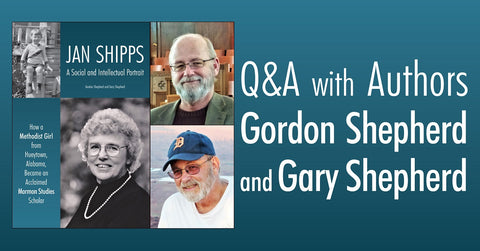
| Download a free sample preview | Order your copy |
Q: For those unfamiliar with Jan Shipps, what can you tell us about her and why she is important within Mormon studies?
A: In the mid-to-late 1970s, Jan Shipps began to emerge as an important new scholarly voice in Mormon history circles. She was not a Latter-day Saint (LDS), and she was a woman claiming the right of place in a field dominated by men. Yet she proved she could more than hold her own with the male scholars who constituted the inner circles of both the LDS-based Mormon History Association and its RLDS counterpart, the John Whitmer Historical Association. Her scholarly work was fresh and insightful, she rapidly ascended to positions of leadership and made meaningful organizational contributions within both groups, and she helped mediate differences between scholarly proponents of these two historically antagonistic camps of Mormonism. These men respected, accepted, and encouraged her. By the early to mid-1980s Jan’s reputation for unbiased and nonpolemical writing and speaking on Mormon topics also earned her the confidence of both the national media (who consulted her constantly for her take on news stories related to Mormons and the LDS Church) and upper echelon authorities of the LDS Church (who gave her unprecedented access to them and their views on the same topics). She was simultaneously instrumental in persuading many prominent religious studies scholars and American Western historians of the significance of Mormonism as a case study in their own disciplines that had previously trivialized or dismissed the serious study of Mormons, past and present. Her 1985 book, Mormonism: The Story of a New Religious Tradition, received widespread critical acclaim and cemented her reputation as an authoritative scholarly interpreter of both Mormon history and contemporary Mormon culture. In succeeding years, her reputation and influence remained strong, and she continued—well into her eighties—as an active scholar, mentor to a new generation of women historians, and as an organizational participant within the expanding field of Mormon studies that she had herself helped to legitimate.
Q: What made you decide to write a book about her?
A: Although the two of us are only marginally connected to Mormon history circles, we had known Jan professionally for a number of years. This connection was due mostly to Jan characteristically reaching out to people like us who demonstrated a manifest interest in the scholarly study of Mormonism from other perspectives (sociology in our case), and we were well aware of her important contributions to the related fields of Mormon history and Mormon studies. Five years ago, she invited us to her home in Bloomington to confer for two days on a then-current project of ours that she found interesting while soliciting our views on a current project of her own. Our natural inclination is to ask a lot of biographical questions in the process of interacting with other people, and we quickly became a lot more familiar with her as a person on this occasion (and on others that subsequently followed). We reflected on what a remarkable transformational story her life presented—a life that merited telling at least in terms of how she had transitioned from unpromising beginnings growing up in Depression-era Alabama, to entering into adulthood as a post-World War II housewife and mother without a college degree, to eventually emerge, in middle age, as a pre-eminent scholar of Mormonism. It didn’t take long for such reflections to crystallize into a conviction that we could, should, and would attempt to tell her story.
Q: Can you briefly explain what kind of analysis this book provides beyond a typical biography?
A: We have not tried to write a thorough, conventional biography that explores every known pertinent fact about our subject in detailing the full arc of her life. We call our project a “social and intellectual portrait,” laying out a basic summary of what we perceive as life-shaping experiences, personal characteristics, role model and mentor relationships, and environmental circumstances—from early childhood through mid-adulthood—that shaped, prepared, and eventually propelled Jo Ann Barnett into improbable prominence as Jan Shipps, the “outsider-insider” Mormon observer par excellence. We also make a detailed argument that Jan’s Mormonism: The Story of a New Religious Tradition merits inclusion with Fawn Brodie’s No Man Knows My History, and Juanita Brooks’s Mountain Meadows Massacre as the three most impactful scholarly books thus far written on Mormon topics. Hand in hand with this argument, we also show how Jan’s deep and extensive participation in professional academic circles—both Mormon and non-Mormon—significantly advanced the stature of Mormon studies as a legitimate and important field of scholarly inquiry. Finally, we suggest how Jan’s own evolving religious beliefs and attitudes regarding contemporary feminist issues have interacted with her understanding and interpretation of Mormonism.
Q: Give us a brief look into Jan Shipps background. When did she decide to start researching and studying Mormonism and what prompted her?
A: Jan arrived in Logan, Utah in the summer of 1960, accompanying her husband, Tony, who had just been hired as the new assistant head librarian at Utah State University. Jan was 30 years old, mother of an 8-year old son, had a number of credits earned at women’s colleges in Alabama and Georgia (but had not completed an undergraduate degree) and knew virtually nothing about Mormons. But she was naturally tolerant and curious about Mormons and immediately began to read as much as she could find about them, including Leonard Arrington’s Great Basin Kingdom (Arrington was then professor of history at USU but on sabbatical at the time). Jan registered for classes at USU to obtain teaching credentials so she could supplement the meager family income. She changed her degree from music to history to facilitate this aim and serendipitously took a historiography course from visiting professor, Everett Cooley (who was temporarily filling in for Arrington). Cooley recognized Jan’s potential as a student and gave her an assignment to research and write about a Mormon topic from primary source materials to which Cooley had access. Jan succeeded brilliantly in this assignment while pursuing a self-directed crash course in readings on Mormon history. When Tony was hired for a new library position the subsequent year at the University of Colorado, Jan opted to enroll in a master’s degree program in history at UC, again with the intention of gaining additional required credentials to become a public-school teacher. Given her recently acquired experience at USU, she chose to write a course paper on a Mormon topic and produced what later became her first published article: “Second Class Saints,” an analysis of Black Mormons. She followed up this paper by expediently writing on another Mormon topic for her master’s thesis, “The Mormons in Politics. 1839–1844.” When Jan was subsequently (and unexpectedly) encouraged by CU history faculty to continue graduate studies as a Ph.D. student, she was by now committed by intellectual passion and commitment (and not just convenience) to write her dissertation on “The Mormons in Politics: The First Hundred Years,” and to continue pursuing a scholarly focus on Mormon topics.
Q: Above, you heralded Jan Shipps’s 1984 book, Mormonism: The Story of a New Religious Tradition, as one of the most significant books in Mormon studies. For readers who are less familiar, can you give a brief description of her book and offer a few reasons for its significance?
A: In spite of Jan’s subtitle, “The Story of a New Religious Tradition,” the story she tells is not a conventionally detailed or comprehensive narrative of Mormon history and the organization of The Church of Jesus Christ of Latter-day Saints. Jan’s approach is to instead understand the rise of nineteenth-century Mormonism using comparative, analytical, and theoretical religious studies methods. While the seven chapters of her book can all be read as separate essays, combined they sustain a coherent thesis about the relatively rare emergence and organizational transformation of a new religious tradition in the context of nineteenth-century American history and religious culture. Jan’s central thematic argument requires that we not only consider early Mormonism in the context of American religious history but that we also see it in broader historical comparison to the rapid rise of Christianity as a new religious tradition from its initial incarnation as a Jewish sect. By new religious tradition, Jan means explicitly that the theological beliefs and associated religious symbols, rituals, and religiously mandated practices diverge so much from the parent religious tradition that they burst the bounds of the old and must be grasped as something fundamentally new and distinctive.
The insights about the emergence and subsequent development of Mormonism that Jan produced began with an analogy to early Christianity. Analogies are heuristic devices that stimulate possible solutions to unresolved problems or debated questions. The debated questions about Mormonism are: What kind of religion is it? Is it Christian or non-Christian? How and why did it emerge and spread so rapidly when and where it did in nineteenth-century America? How did it not only survive furious resistance as a perceived Christian heresy but ultimately flourish to become a rapidly expanding international religion in the twentieth century? And in the process of doing this, what kind of religion did it consequently become for its adherents both at home and abroad? These are the kinds of questions that concern Jan’s analysis of Mormonism and not merely a descriptive, chronological account of its history and most prominent leaders.
In short, Mormonism is not written to be either faith promoting or faith debunking. It is not a conventional history. It is a comparative and analytical treatise that positions Mormonism within larger historical, cultural and social contexts. It commanded the attention and respect of eminent scholars and conferred increased recognition and legitimacy on the scholarly field of Mormon studies.
Q: You mentioned that Jan Shipps became a go-to expert for the national media whenever they covered a Mormon-related topic. How did Jan achieve this status? And how did her national media presence affect her relationship with the leaders of the LDS Church?
Jan not only became deeply involved with “insider” LDS and RLDS scholarly organizations (The Mormon History Association and the John Whitmer Historical Association), she also presented and published her work on Mormonism in a number of nationally prestigious outlets while simultaneously assuming active leadership roles in the professional organizations that sponsored these same scholarly conferences and journals (e.g., The National Historical Society, the Western History Association, the Center for American Studies, and the American Academy of Religion, among others). Prominent participation in these organizations gave national exposure to her scholarly work and advocacy of Mormon studies and garnered the attention of the media at a time that coincided with escalating interest in Mormons and the LDS Church due to such issues as Blacks and the priesthood, the Equal Rights Amendment, the Hoffman bombings, and the rapid growth and increasing influence of the LDS Church and prominent individual Mormons around the world. Given her growing reputation in national scholarly circles, It didn’t take long for the media to discover Jan as a non-Mormon expert on Mormons, who could provide unbiased but authoritative information and analysis on these and many other issues of interest. At the same time, through both local and national network sources, LDS Church officials reciprocally came to appreciate Jan’s unflagging promotion of detached but non-polemical scholarship on Mormon subjects. This appreciation was particularly facilitated through the savvy efforts of LDS Church Director of Press Relations and Public Communications, Jerry Cahill, to arrange Jan’s access to Church leadership as a mutually trusted bridge between them and national news outlets.
Q: How did Jan's Methodist faith evolve through the years that she studied Mormonism? How do you feel her religious tradition affected her writings on Mormonism?
A: Jan grew up as a dutiful, simple believer but a not very pious Methodist. The most important religious principles she acquired from her childhood were tolerance of others’ religious beliefs and the notion that the primary purpose of religion was to help people in need. Her religious tolerance has matured into an active curiosity about diverse religious perspectives and genuine respect for the legitimacy of religious beliefs that are sincerely held in different religious traditions. This outlook came into its maturity as she studied Mormon history, beliefs, and practice—all completely unknown to her at the outset of her academic career. Jan’s detached, analytical, but respectful treatment of Mormonism’s beginnings and development as a new religious tradition was a hallmark of her early, acclaimed work. Ongoing, increased contact with ordinary Mormons, Mormon scholars, and LDS Church leaders have deepened her appreciation of Mormonism as a valid religious tradition. But she is not a convert to Mormonism and remains committed to the organizational expression of her Methodist beginnings. However, Jan’s private religious beliefs are more complicated, diverse, and universal than those proclaimed either by conventional Methodism or Christianity in general. She prays for others because she knows it brings them comfort. But Jan does not pray for herself, because she believes in her own ability to cope with life’s problems and in a just God who knows her heart.
Q: What are you hoping readers will gain from this book?
A: We hope all readers will come to appreciate—as we did in conducting our research—the truly remarkable, utterly unanticipated unfolding of Jan Shipps’s life and career. This is a life that should inspire us all. But it should particularly inspire the aspirations of many young LDS women who struggle to strike a working balance between their deeply felt religious and family commitments and the full development of their intrinsic talents, potential to grow, and ability to see and take advantage of life opportunities on an equal par with men. And we hope readers with a scholarly interest in Mormon studies, particularly younger students and scholars whose awareness and interests have developed since the heydays of Jan’s seminal contributions, will become more appreciative of the foundational role Jan played in promoting Mormon studies as an important field of study.
Gary and Gordon Shepherd
Free ebook offer: Knowing Brother Joseph Again: Perceptions and Perspectives May 16 2019

FREE EBOOK FOR NEWSLETTER SUBSCRIBERS
Book description:
This collection of essays by renowned historian Davis Bitton traces how Joseph Smith has appeared from different points of view throughout history. Bitton wrote: "People like Joseph Smith are rich and complex. . . . Different people saw him differently or focused on a different facet of his personality at different times. Inescapably, what they observed or found out about him was refracted through the lens of their own experience. Some of the different, flickering, not always compatible views are the subject of this book.”
“A thoughtful and thought-provoking introductory text for someone wanting an overview of Joseph Smith.” — Improvement Era
STEPS TO DOWNLOAD
**Ebook file must be downloaded onto a laptop or desktop computer. After downloading, you can transfer the file to a tablet or app.**
1. Enter your email address in the form below to sign up for our newsletter and receive a welcome email with instructions (check your junk mail if you do not see it). If you are already a newsletter subscriber, you should have received an email with this free ebook offer and instructions to download.
2. Click the here to open the ebook page on our website. Select which ebook format you wish to download (Kindle, Apple, Nook, or Kobo). The price will show as $19.95 but will change to $0.00 as you complete these steps.
3. Click Add to Cart.
4. Click Checkout.
5. On the Customer Information page, fill out your name and address information. Enter the discount code that you received in the welcome email. The discount code will reduce the price of the book to $0.00.
6. Click Continue to Payment Method. You will not be required to enter payment info. DO NOT ENTER ANY CREDIT CARD INFORMATION.
7. Click Complete Order. You will be emailed a link to download the ebook file along with instructions for transferring the file to an e-reader device or app (check your junk mail if you do not see it).
Note: Once you have downloaded your ebook, it will be on your computer's hard drive, most likely in the "Downloads" folder. Kindle format will end with ".mobi." All other formats will end with ".epub."
Preview Jan Shipps: A Social and Intellectual Portrait April 30 2019
Jan Shipps: A Social and Intellectual Portrait:
How a Methodist Girl from Hueytown, Alabama, Became an Acclaimed Mormon Studies Scholar
By Gordon Shepherd and Gary Shepherd
Download a preview here or view below.
How did Jo Ann Barnett—a Methodist girl born and raised in Hueytown, Alabama, during the Great Depression and World War II—come to be Jan Shipps, a renowned non-Mormon historian and scholar of The Church of Jesus Christ of Latter-day Saints? In Jan Shipps: A Social and Intellectual Portrait, authors Gordon Shepherd and Gary Shepherd tell the story of how Shipps not only became an important and trusted authority in a field that was at the time predominantly made up of Mormon men, but also the crucial role she played in legitimizing Mormon Studies as a credible academic field of study.
EASTER FLASH SALE: Up to 70% off Select Titles April 15 2019

FLASH SALE: Up to 74% off Women's History and Topics Titles March 01 2019

 “The authors connect ordinary lives with enduring themes.” $24.99 |

$25.99 |

$18.99 |

$18.99 |
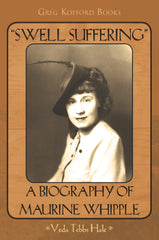
$24.99 |
Print sale ends Sunday, 3/31/2019
|
$31.95
$22.37 |

|

|

|

|
FLASH SALE: Select titles up to 75% off! February 14 2019
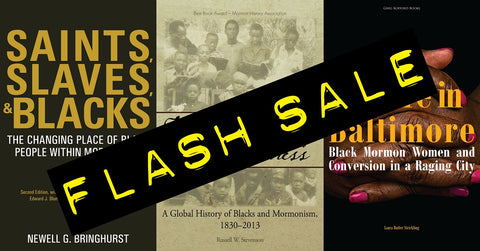
 “Here are riches that you won’t want to miss.” $18.99
|
“Led to a paradigm shift in my understanding of Mormon history.” $23.99
|
“Invaluable as a historical resource.” $26.99
|
Print sale ends Thursday, 2/28/2019
|
$20.95 |
$27.95 |
$32.95 |
Preview Life and Times of John Pierce Hawley: A Mormon Ulysses of the American West February 08 2019

Life and Times of John Pierce Hawley:
A Mormon Ulysses of the American West
Download a preview here or view below.
Read a Q&A with the author here.
Life and Times of John Pierce Hawley: A Mormon Ulysses of the American West narrates the wide-ranging life and times of John P. Hawley’s search for and service to an authentic Mormon faith. Melvin C. Johnson has been researching Hawley’s adventurous life along the American borderlands and frontier for three decades. Hawley was an active member of several Latter Day Restoration denominations in Missouri, Illinois, Iowa, Kansas, Wisconsin, Texas, the Indian Nations of Oklahoma, and Utah Territory from 1838 to 1909.
A Mormon Ulysses follows Hawley’s adventures in the West growing up as a logger, woodworker, settler, church official and missionary. He helped build the first Mormon temple west of the Mississippi, battled the Comanches, was entangled in the horrors of the Mountain Meadows Massacre, and pioneered the Pine Valley community in southern Utah. Hawley’s western odyssey is timely, worthy, and deserves to belong in the canon of American history and biography.
Q&A with Melvin C. Johnson for Life and Times of John Pierce Hawley: A Mormon Ulysses of the American West February 08 2019

| Download a free sample preview | Order your copy |
Q: Give us a little information about your background and how you came to become a historian of Mormonism and the American West.
A: I was born in Northern California and grew up in Carlsbad California where I graduated from high school. Renowned historian Will Bagley and I attended the same LDS seminary in Oceanside in the mornings before high school. I pursued degrees at Dixie College in St George Utah and Utah State University in Logan Utah. Then I served twelve years in the military as an airborne infantryman and legal administrator. After being discharged from the military, I attended Stephen F. Austin State University and graduated with a Masters in both history and English. I taught at several universities and colleges and retired from Angelina College in Texas. Halli Wren Johnson, my wife, and I live in Salt Lake City Utah, although we maintain strong connections to eastern Texas. Let me say I loved Dixie College (the only junior college in America, it seemed, that would accept me). I met historian Juanita Brooks there and had no idea who she was, or that the massacre at Mountain Meadows had occurred just thirty-five miles up Highway 18. I had no idea what the massacre at Mountain Meadows even was at the time!
I came to be fascinated by the intersection of Mormonism in the American West at Texas Forestry Museum, Lufkin, Texas. Local forest industries funded my research position in Forest and Mill Town history. During my research, I came across references to the Mormon Millers (sawmills owned and operated by Mormons) of the Texas Hill Country before the American Civil War. I created a Mormon Miller database and began inserting research notes as I came across them in my other pursuits. Eventually, I entwined the Mormon Millers of the Hill Country into my interest in German Texans before the American Civil War and made more intersections. Beginning in 1996, I started researching and out of that came the award-winning Polygamy on the Pedernales: Lyman Wight’s Mormon Villages in Antebellum Texas 1845 to 1858, which won the John Whitmer Historical Association Best Book Award in 2006 funded by the Smith-Pettit Foundation.
During all of that, the life of John Pierce Hawley became a compelling narrative. The son of Sarah and Pierce Hawley, John came of age and the Latter-day Saint Black River Lumber colony in Wisconsin Territory in the early 1840s. Bishop George Miller and Apostle Lyman White directed this lumber mission. The colony's mission was to provide lumber and timber for the construction of the Nauvoo Temple and the Nauvoo House (a large-scale hotel project that never saw completion). Apostle Lyman Wight broke from the Quorum of The Twelve Apostles soon after the death of Joseph Smith Jr. Wight could not submit to Brigham Young's leadership of the Church. Instead, he carried out a mission that was given to him by Joseph Smith Jr. to the Republic of Texas to establish a colony for the Latter Day Saints. John Pierce Hawley help to build the first Mormon temple west of the Mississippi in Zodiac, Texas, in 1849. In it, he was sealed to Sylvia Johnson and was a witness and officiator in the rites and rituals of the Zodiac Temple.
Q: John Pierce Hawley left Wight’s colony, converted to Brigham Young’s Utah church, and became one of the early settlers in southern Utah’s “Dixie” area. What can you tell us about this period of his life?
A: John Pierce Hawley followed Wight for eleven years until he broke with him in 1854 and followed his father, Pierce Hawley, to the Indian nations in what is now Oklahoma. Two years later in the Cherokee Nation, John and Sylvia Hawley (and most of his family and kin) converted to the Utah church led by Brigham Young. That summer and fall the Hawley’s joined the Jacob Croft company and emigrated to Utah Territory. On the trail, they passed the ill-fated Martin and Willie handcart companies. In Utah, the Texans were interviewed and re-baptized, and the Hawleys were sent to Ogden in northern Utah. The following spring, John and his brother George were called, along with many other Texans, to Washington County in southern Utah to begin a mission on the Rio Virgin growing cotton and support a barrier “wall” of colonies that Young built in the Intermountain West to protect the stronghold of Zion.
John and Sylvia Hawley, as well as John’s brother George and his three plural wives, lived in Pine Valley, Utah for thirteen years—from 1857 to 1860. John worked as a road inspector, constable, public and religious school superintendent, and was the presiding elder from 1857 to 1867. However, because John was monogamous, William Snow, brother of Apostle Erastus F. Snow, was installed as the first bishop of Pine Valley. Apostle Snow did not think monogamous priesthood holders should obtain leadership positions in the Church.
Q: Some of John Pierce Hawley’s contemporaries accused him of being involved in the massacre at Mountain Meadows. What does the historical record tell us?
A: After a less than inspiring agricultural year in Washington, the Hawley brothers went to Spanish Fork, Utah, to pick up their wives and be sealed to them in Salt Lake City by Brigham Young. On the return to Dixie, they rode with the doomed Fancher-Baker wagon train that was massacred at Mountain Meadows by the Mormon militia from the Iron County Brigade, commanded by Colonel William Dame. John D. Lee, one of the other militia leaders, later accused John Hawley of being present at the massacre. John’s brothers, George and William, have been identified as being on the Meadows killing fields. John denied any participation in it and even condemned the atrocity in his local congregation. His public condemnation nearly got him killed, as members of his congregation included some of the murderers. A secret meeting resulted in a narrow vote to let him live.
Q: Eventually, John Pierce Hawley left Brigham Young’s church and joined the Reorganized church, led by Joseph Smith III. What can you tell us about the events that led to his conversion?
A: In 1868, several events change John’s life. He received his second endowment under the hands of Apostle Erastus Snow in Salt Lake City and assisted Apostle Snow in giving others their second endowments. John was then sent on a mission to Iowa to convert his RLDS family members to the Utah church. He spent five months there, and as he reported, neither he nor his relatives converted one another. However, John's mission to Iowa planted seeds in him. Over the next year-and-a-half, John struggled with the principles of polygamy, Brigham Young’s Adam-God teachings, the harrowing threat of “blood atonement,” and overbearing priesthood leadership. In November of 1870, both John’s and George Hawley’s families converted to the Reorganized church. They left Salt Lake City on a train to western Iowa and never returned. All the Hawleys in Iowa remained participants in the Reorganized church until their deaths.
Q: In what ways do you think John Hawley’s story is significant within Mormon history?
A: John Pierce Hawley is important because he is a Mormon Ulysses of the American West. His interactions with Mormonism brought him through the interior of the Great American West from the Wisconsin Territory, to the Republic of Texas, to Indian territory, to Utah Territory, and back to Iowa. He crisscrossed the interior of western America five times because of his devotion to Mormonism. He served missions to eastern Texas, along the Missouri and Mississippi rivers, to northern Utah, and western Iowa. He was fascinated with Mormonism and was a fervent disciple of Joseph Smith Jr. His life demonstrated that for him, there was “more than one way to Mormon.” He kept trying until he got it right for himself.
| Download a free sample preview | Order your copy |
End of year EBOOK FLASH SALE: 2018 titles up to 80% off! December 24 2018

Twelve Days of Kofford, Day 12: Ebook Flash Sale December 11 2018

|
$18.99 |
$23.99 |
$17.99 |
|
$25.99 |
$29.99 |
$18.99 |
|
$23.99 |
$29.99 |
$22.99 |
|
$22.99 |
$16.99 |
$26.99 |
The 12 Days of Kofford Begins December 1st! November 27 2018

(Prices listed not reflective of discount until day of sale)





